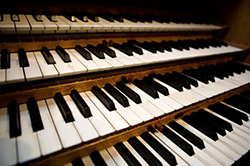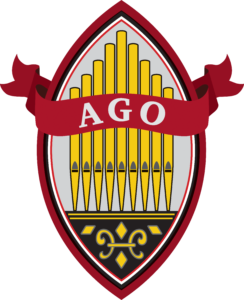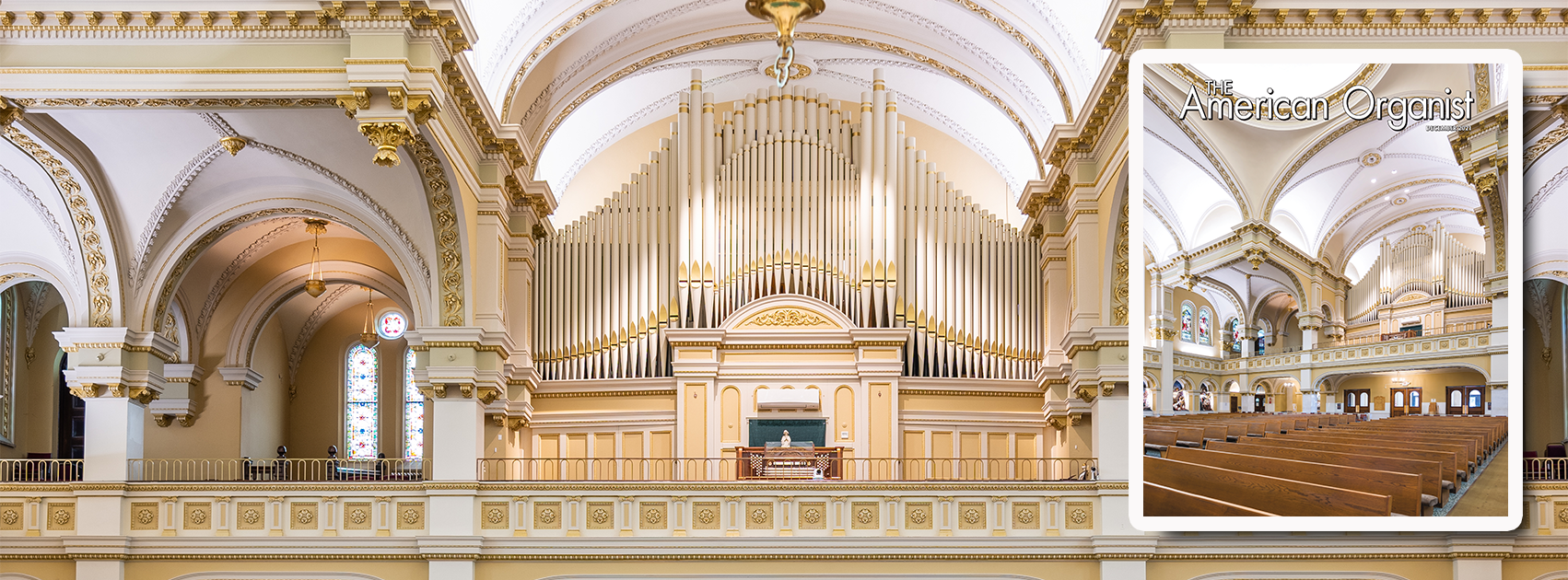 St. Patrick Roman Catholic Church
St. Patrick Roman Catholic Church
Erie, Pennsylvania
Heritage Pipe Organs Inc.
Buffalo, New York
Stoplist
By Charlie Porter
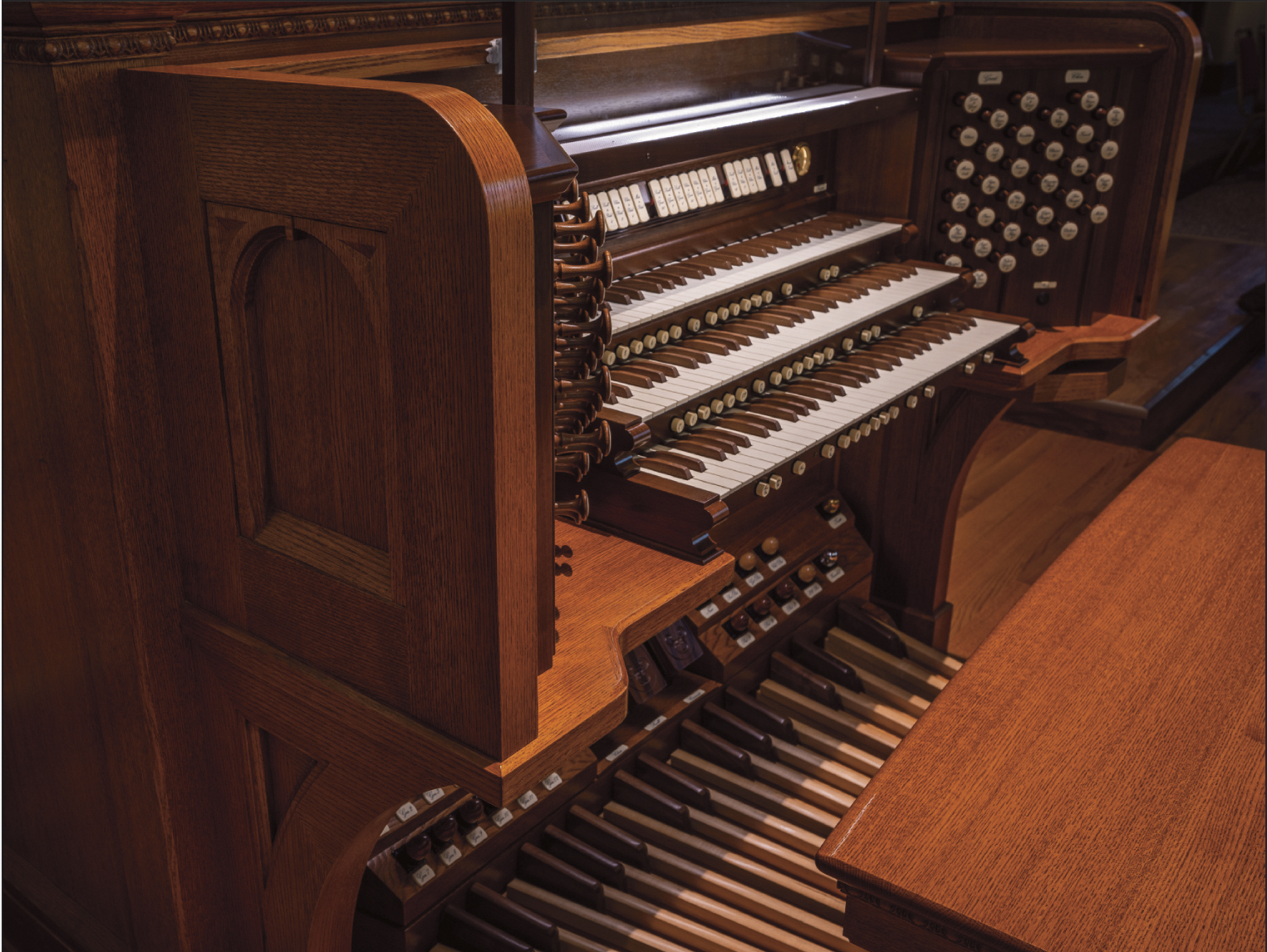
St. Patrick Church on 4th Street near the Bayfront is the oldest Catholic parish in Erie, Pennsylvania. Founded in 1837, the church began construction in 1903 and the first Mass was celebrated on Christmas Day of 1906. The building underwent a major renovation in 2012; it is home to a world-renowned, life-size, hand-carved Stations of the Cross by the Franz Mayer studio of Munich. A 34-rank A.B. Felgemaker organ, Opus 901, was installed in 1906 for the grand opening but was left untouched in the recent building renovations. Given the fabulous nature of the church edifice, its history, and the artifacts within, rebuilding the organ to a comparable level of grandeur was foremost in our minds.
St. Patrick’s contracted Heritage Pipe Organs to rebuild Opus 901 in 2017, with installation the following year. Mark Alloway, the church’s music director, provided us with a copy of the original specification as noted in the Felgemaker company ledger. This primary source allowed us to compare the original disposition of the organ with the changes that had been made in the intervening century. The original tubular-pneumatic action had subsequently been electrified and a stop-tab console was installed. Certain ranks had been altered, such as the Swell 8′ Aeolina being cut down to make a 2 ⅔ʹ Nazard. The configuration of the chambers made servicing and tuning challenging, and the condition of the windchests and associated components made an organ project imperative.
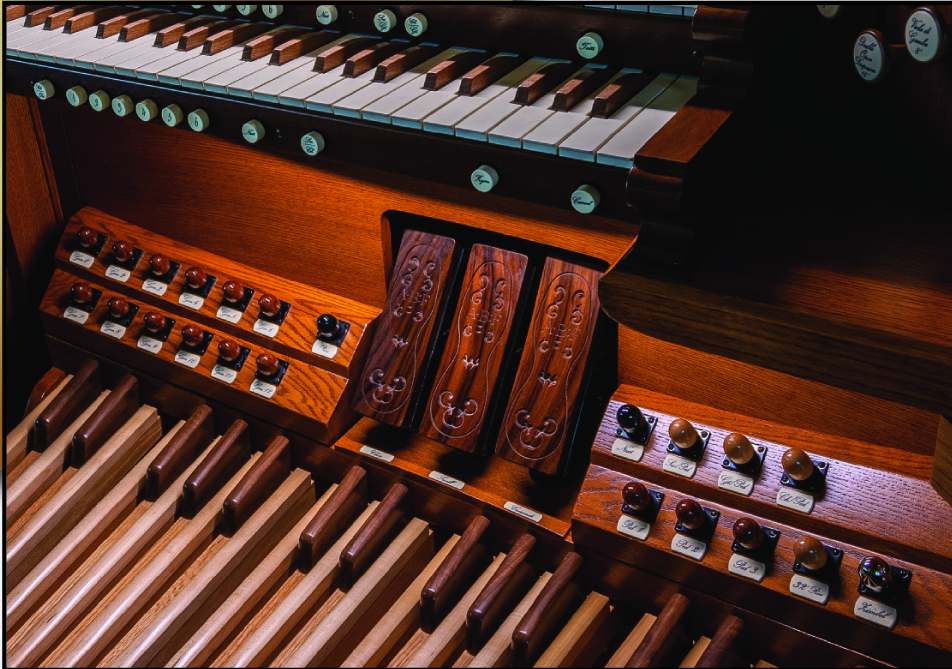
In addition to aesthetic parameters, maintaining the original pipework was of paramount importance. Furthermore, we hoped to augment the organ with tasteful additions to the stoplist. Designing a layout that would provide tuning stability and access for maintenance in the long term was an additional priority. In consultation with Organ Supply Industries of Erie and the music director, a design layout and stoplist were created to meet all these criteria.

Choosing which stops to highlight is challenging because of the excellence of each rank individually and the church’s spectacular acoustics. The Great First Open Diapason is rich and warm, filling the room all by itself: a most delightful reminder of the golden age of American organbuilding. The beautiful Choir Concert Flute is both harmonic and tapered—quite the rarity! A complete complement of reeds, flutes, and strings in all divisions allows ample registration options for any repertoire. Since the original Swell Aeolina had been cut down to play as a Nazard in the distant past, we opted to include a used and period-appropriate 8′ Aeoline in the Swell, as well as adding a new independent Tierce.
The new oak hardwood console, built by Organ Supply, matches in ornamentation features of the existing woodwork at St. Patrick’s. Every convenience a modern organist would expect is available using the Peterson ICS-4000 system and the elegant console controls. The expression and crescendo pedals were artfully constructed to mirror Felgemaker models. The facade pipes, upon close inspection, showed signs of instability and damage. These were all removed, repaired, and repainted in similar motif to the sanctuary, then reinstalled on reinforced hangers.
Behold! Here we may observe the result of months of collaborative planning and design with Organ Supply Industries; the dedication of Msgr. Henry Kriegel and organist Mark Alloway; the generosity of Morgan and Kathy Jacox, who made this project possible; and the countless sweat-soaked, filthy, and rewarding hours put in by the staff of Heritage Pipe Organs. Hitherto a languishing gem, the organ at St. Patrick’s is now an exemplar of the parish’s nickname: the “Spirit of the Bayfront.”
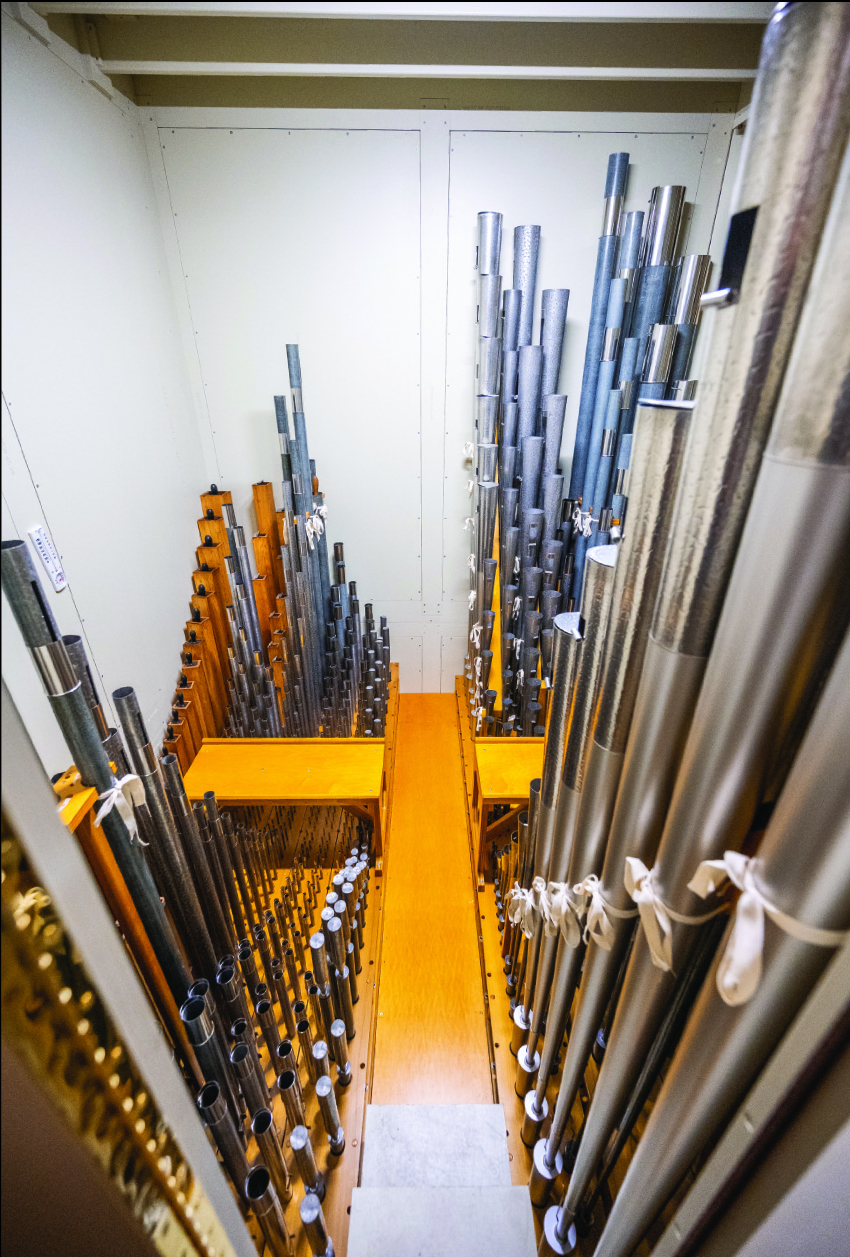
Charlie Porter is president of Heritage Pipe Organs, based in Buffalo, N.Y.
Website: http://heritagepipeorgans.com/
From the Consultant
Before we begin, the elephant in the room needs to be addressed. Whenever I am asked to consult on organ projects, there are ground rules that need to be established. As an organist, organbuilder, and member of the management team of Organ Supply Industries (OSI), my role would be without compensation, focused on education, and would not overlap with selection of the organbuilder. Consultation concluded in early 2017, at which time a list of 18 firms capable of completing the task was provided. With a clear understanding of expectations, we began our work to flesh out the organ’s history and immediate needs, as well as future goals for its use.
St. Patrick’s controversial architecture is not based on a traditional cruciform style; rather, a Romanesque structure devoid of internal supports allows for vast and uninhibited sight lines throughout the nave. The church also offers an immersive experience in Christianity from the Catholic perspective with the art surrounding the nave. For a more comprehensive history and photographic survey of the space, visit saintpatrickparisherie.org/historyofsaintpatricks.html.
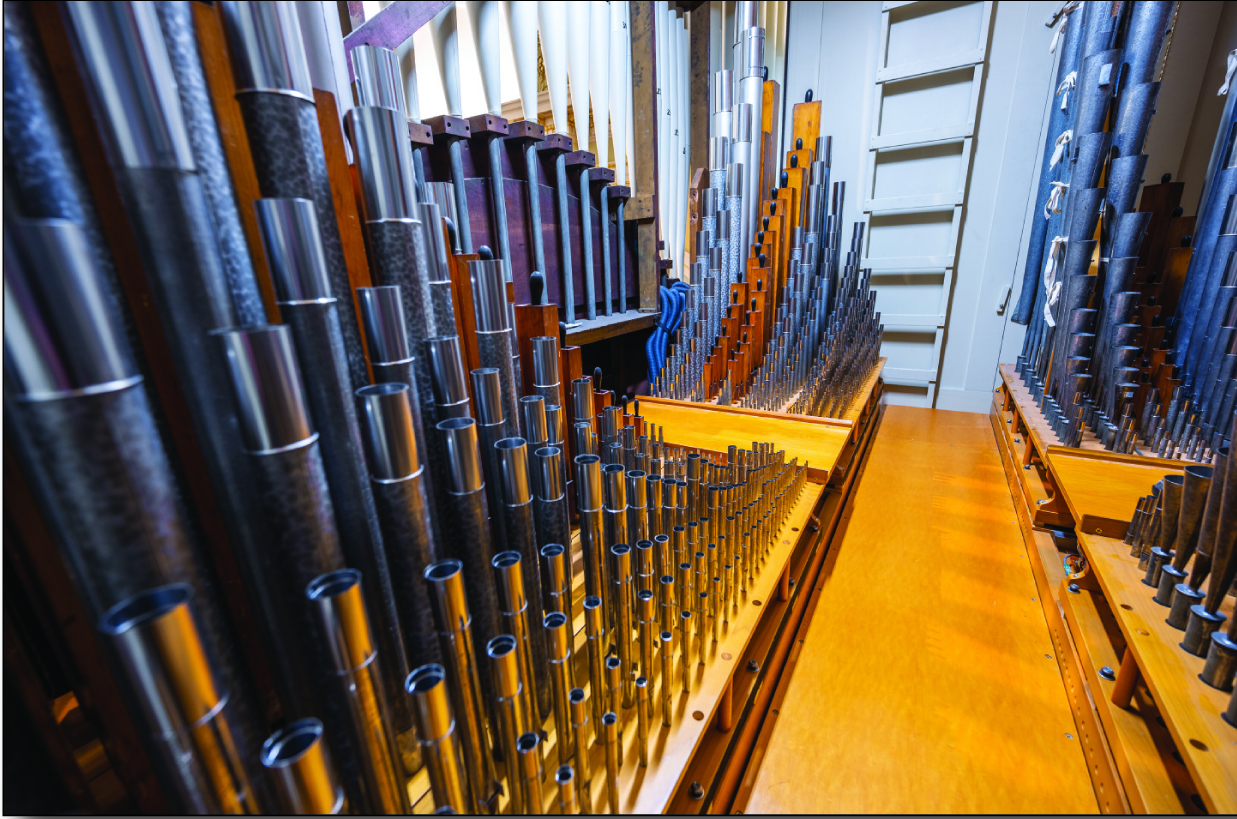
St. Patrick’s journey from 1906 to 2020 has not been without the usual trials and tribulations that many inner-city congregations face. In the latter half of the 20th century, the church suffered a destructive fire that damaged the central dome and caused structural damage. By the turn of the next century the parish faced a dwindling congregation whose vision for the future was uncertain. Despite these conditions, efforts were channeled to make necessary repairs to the building, starting with the repointing of the exterior stone. Over the course of 20 years, the structure—including the Stations of the Cross, murals, and reliefs—has been completely restored through strong leadership and focus on community mission.
With the building renovation complete, focus turned to the final major asset—A.B. Felgemaker’s Opus 901. The 1906 organ has served as the heart of the music program since the construction of the building. Throughout the years, it had been subject to mechanical and tonal alterations. Changes to the keying mechanism and winding system, along with tonal revoicing and additions to serve a more neoclassical approach, were all deployed throughout the instrument’s many years of service.
As in many organ projects, the council ran the gamut of differing opinions on expenditures for the instrument. Some knew of its deteriorated state, while others did not understand because the musician was very skilled at hiding the deficiencies. My pedagogical role was to foster understanding between the musician and the council. We began with a discovery period to define the current state of the organ. This assessment looked at longevity, reliability, and serviceability. Once these items were explained, all options were presented to the committee for consideration, such as a rigorous maintenance program, outright replacement with a new or existing heritage instrument, a hybrid approach, or an all-digital approach.
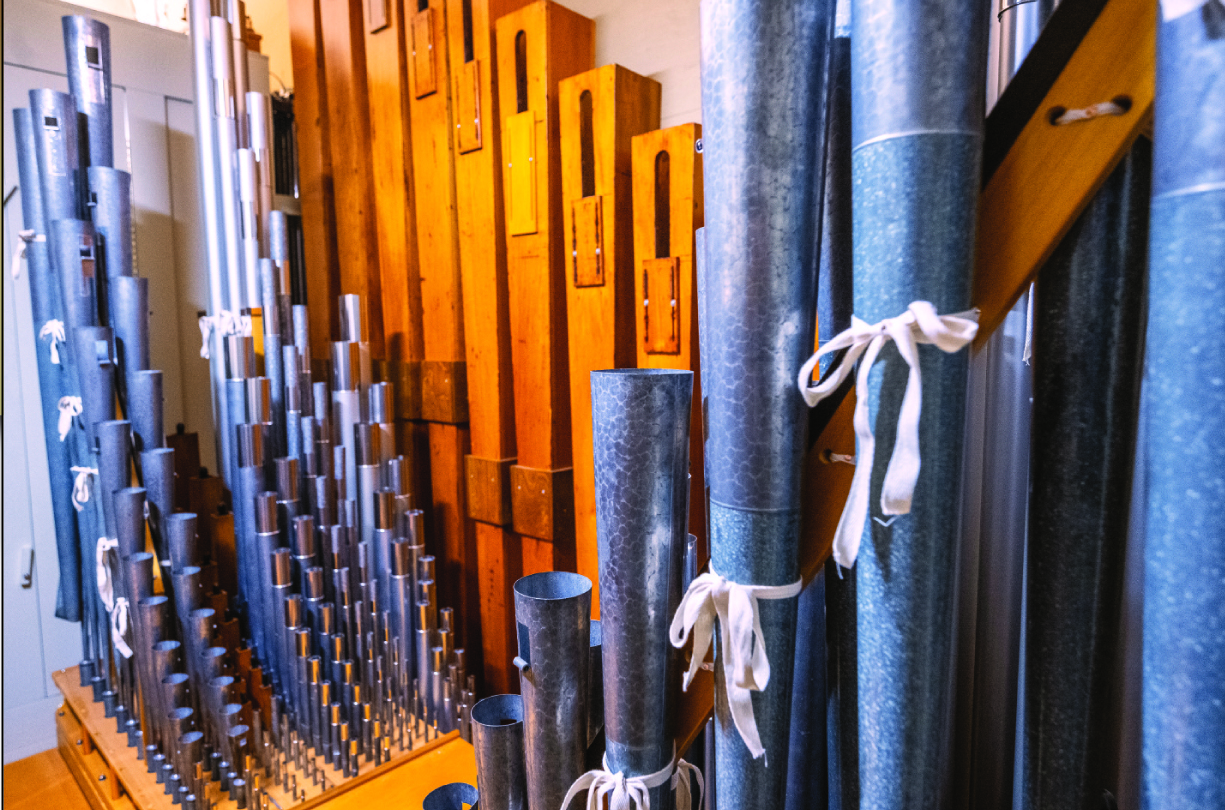
Following the educational process, the committee unanimously agreed upon a way forward. They wished to preserve their history, solidify reliability, and ensure the longevity of the organ for future generations. With this vision established, a request for a quotation was formed along with an extensive list of professionals capable of completing the task. Ultimately the church selected the Heritage Pipe Organ Company of Buffalo, New York.
The total project encompassed a new mechanical chassis of pneumatic slider chest and electropneumatic unit design, a new console, and a solid-state organ control system. The preservation of the voicing aimed to honor the original instrument by A.B. Felgemaker, incorporate some contributions from the later Tellers instrument, and allow for the addition of a solo reed and a Pedal reed.
The completed project demonstrates well the Erie organbuilding tradition and beautifully showcases the green and renewable nature of the pipe organ as a long-term asset to any music program. The story is almost directly from the book Imagining Abundance, especially the chapter titled “Money Follows Mission.” The resolute and well-defined decision of the council paved the way for the project to be funded through the generosity of one family. It goes without saying that the overall success of the undertaking is due to the St. Patrick’s Church council and organ committee, Fr. Henry Kriegel, Mark Alloway, the Jacox Family, and the staff of Heritage Pipe Organ Company for their talents, mutual respect, clear communication, and dedication.
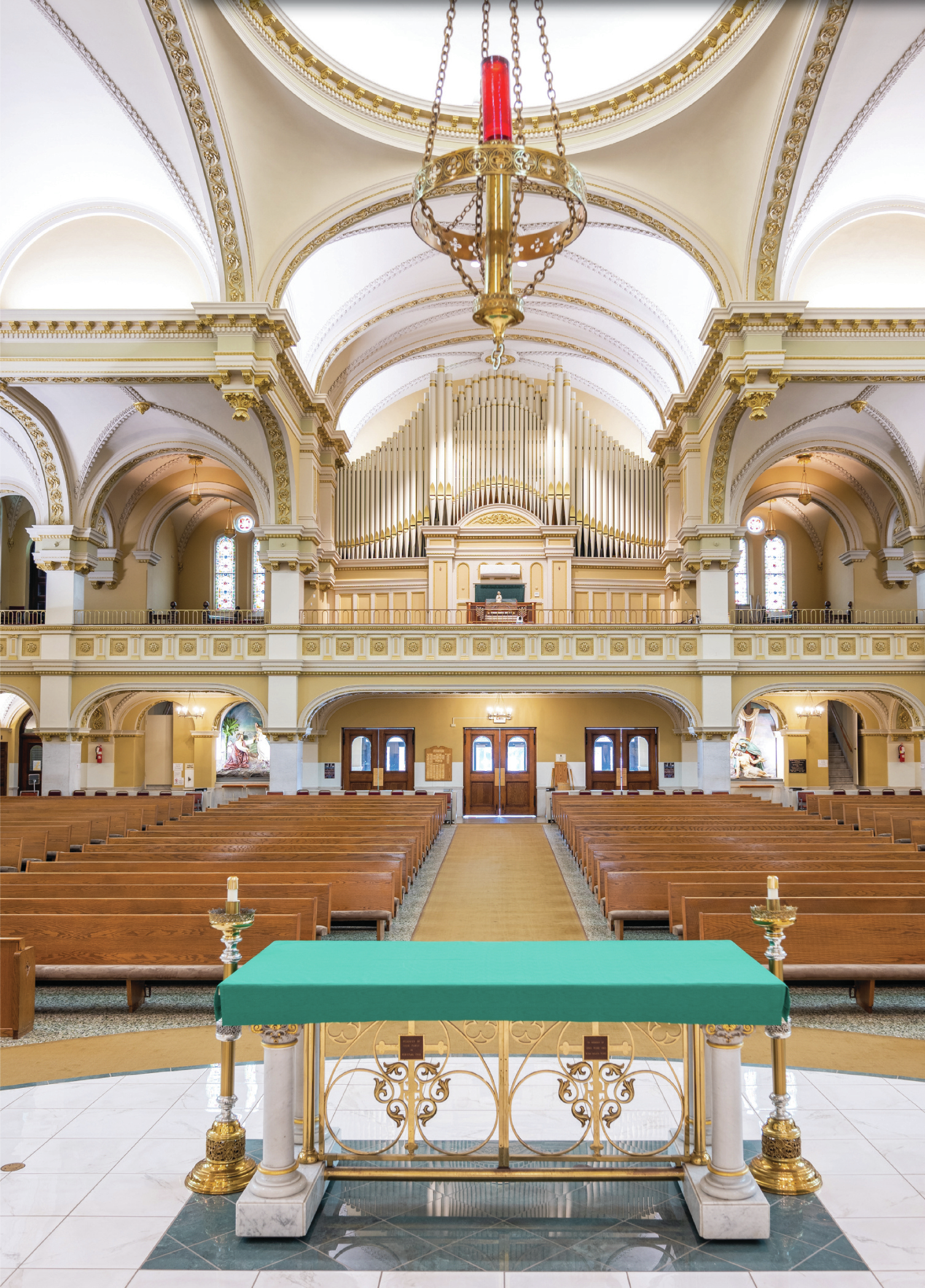
Bryan Timm
Photography: Tim Rohrbach
